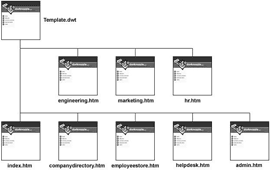"Hey Rad Man!" began an email I received last week. "I'll pay $100 for a link on your Downloads page." Of course, there's no way of knowing if such offers are legit .. until the cash arrives.
 I've researched Search Engine Optimization (SEO) enough to know I don't much care for it.
I've researched Search Engine Optimization (SEO) enough to know I don't much care for it.
Programming I enjoy, but SEO contains a seemingly endless amount of info to digest, some of which conflicts from site to site.
And the suggested techniques are often time-consuming, with dubious results that demand the patience of a saint before you start to see results. Rather focus my energies on generating original content.
Moreover, some of the techniques used to 'optimize' web pages (for higher search engine rankings) seem manipulative, if not downright dishonest. Many of the SEO sites I've visited have a 'slimy' feel to them » detailing how to trick search engines into ranking your pages higher.
I learned that links from 'ranked' pages will (in turn) yield greater 'importance' to the pages that those links aim at (point to). This is (I assume) what this person had in mind when she contacted me.
The email seemed both professional and specific. (Not slimy.) The girl was clear about what she wanted. And best of all, her proposal could be implemented minutes. (Simple.)
The problem was .. that the page they wanted a link on was created back when I knew squat about web standards (XHTML & CSS). The underlying mark-up (code) was a rat's nest of deprecated tags and coding no-no's.
Downright embarrassing .. from a webmaster's point-of-view. Miracle the page would render at all (.. even in 'quirks' mode).
![Reblog this post [with Zemanta]](http://img.zemanta.com/reblog_e.png?x-id=562eac75-8616-4ae5-bcbb-683523b9650d)
 There are 4 different '
There are 4 different '
 Where Programming languages are concerned, expressiveness might be the ability to DO a lot with a little.
Where Programming languages are concerned, expressiveness might be the ability to DO a lot with a little. Never been ever to figure out this statistical curio, seeing I live in
Never been ever to figure out this statistical curio, seeing I live in 






